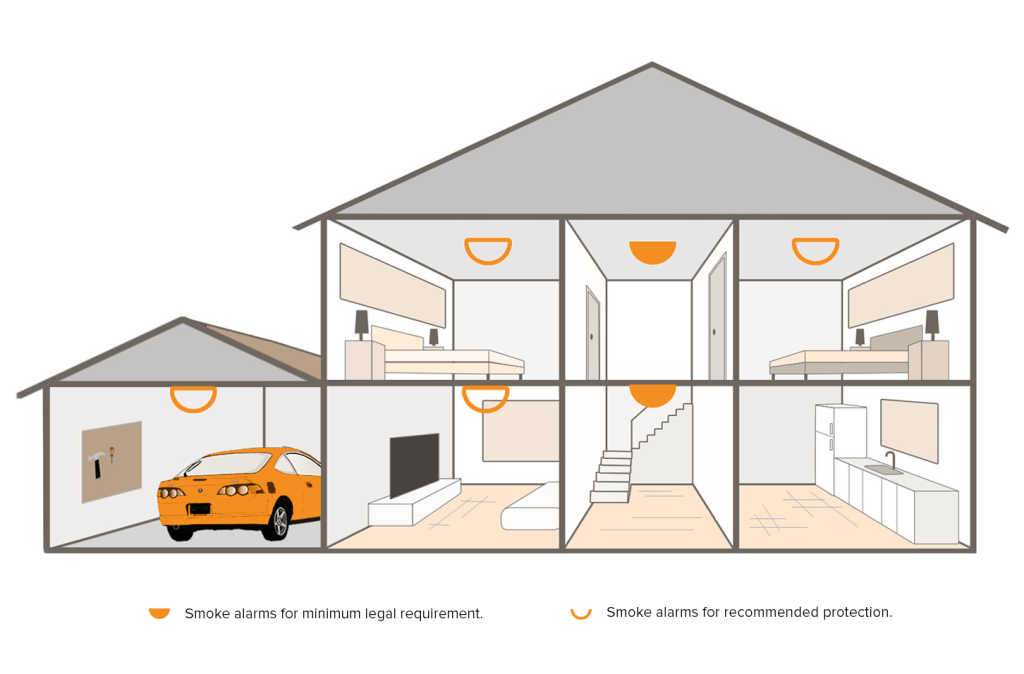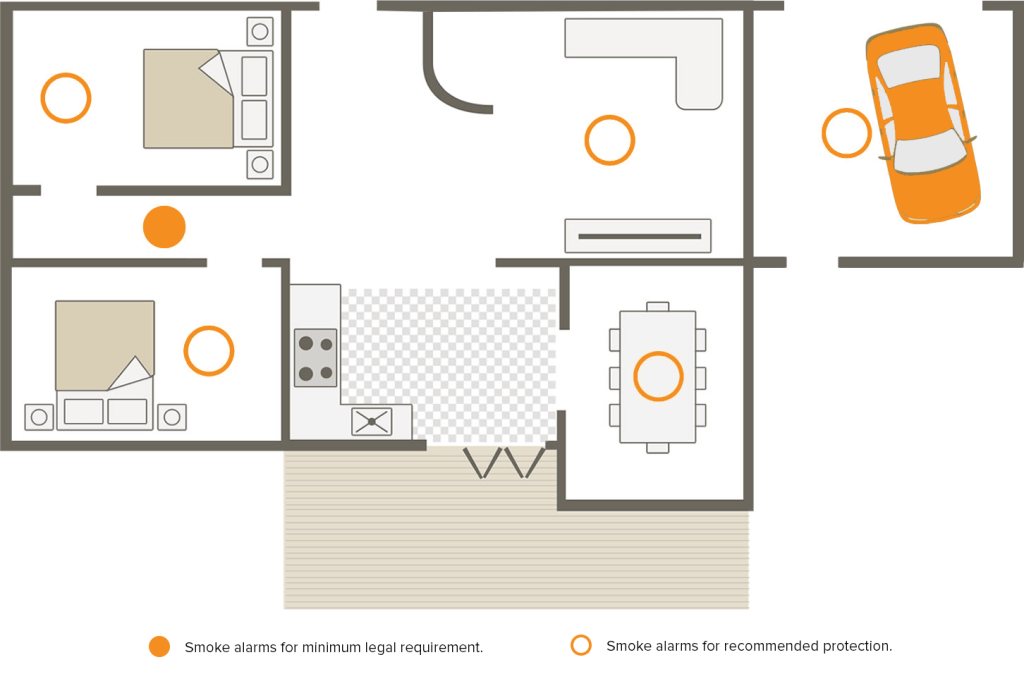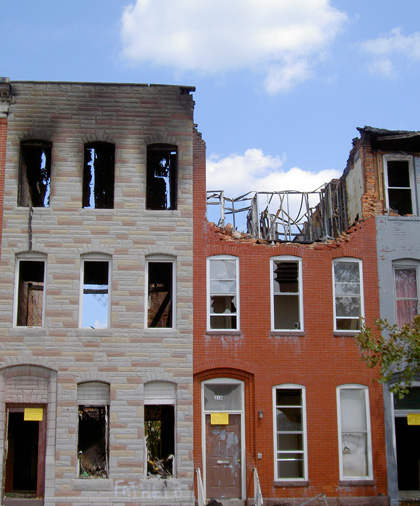Like a thief in the night, a fire can easily break out and spread through your home without the slightest hint of an attack. Some people would even dare say that it is a million times better to be burglarised than be a victim of fire. At least with burglary, a victim can easily recoup his or her losses over time; with fires, it is not only the homeowner’s property that are at risk, but also the lives of the occupants which makes installing smoke alarms ever so important.
How smoke alarms work
A smoke alarm works to detect a fire in the home, either by ‘seeing’ or ‘feeling’ the smoke. A loud alarm is then set off to alert the occupants of a house that something is wrong. Because of the sound created by the alarm, the homeowner can easily pinpoint the location of the fire and do the appropriate action to quell the fire. This is particularly beneficial during the night when everyone in the house is fast asleep and the sound can rouse the household from sleep to move to a safer location.
Legislation in New South Wales
Smoke alarms must be installed in all buildings in NSW where people sleep. This legislation is stated in the Environmental Planning and Assessment Regulation 2000.
The Building Legislation Amendment (Smoke Alarms) Act 2005 covers residential and shared accommodation across NSW. The easiest way to think of residential and shared accommodation is to think of them as buildings or vehicles in which people sleep.
- Residential Accommodation includes everything from relocatable homes to freestanding homes.
- Shared accommodation includes everything from residential homes and hospitals through to hotels and boarding houses.
In February 2011, NSW smoke alarm regulations were expanded to include caravans, campervans, and RVs.
Alarm Compliance
Smoke alarms must be compliant with Australian Standard AS3786, if installed after May 2006. Alarms installed prior to that date, and in good working order, are considered acceptable on the condition that their location is compliant with legislation.
Proper smoke alarm installation
Installing a smoke alarm may prevent an all-out blaze from happening. However, there is a vast difference between simply having a smoke detector installed and having one installed properly.
There should be one smoke alarm installed on every home’s storey. However, for optimal protection, additional smoke alarms should be installed, particularly in the living room, in the halls between bedrooms, and even inside the bedrooms for heavy sleepers.
It’s important to note that putting smoke alarms in specific areas can hamper their efficacy. For example:
- The corner junction of walls and ceilings and the area between exposed floor joists create dead air space. When alarms are installed in these areas, smoke created by a fire may not reach them.
- Areas that have excessive air movement such as windows, doors and areas near fans and air-conditioning units are also not ideal places for placing an alarm.
- There are also areas in the home that may trigger false alarms. These include the bathroom, the kitchen and insect-infected areas.


Who is responsible?
As a homeowner it is your responsibility to comply with the legislation.
So, are smoke alarms compulsory in rental properties?
Yes. In rental accommodation the shared responsibilities are as follows:
- Landlords are responsible for supplying smoke alarms and installation. If they are battery operated then they are also required to provide a new battery as each tenancy commences.
- Tenants are responsible for replacing batteries in battery operated alarms during the period of their tenancy. If they are unable to do so, they must notify their landlord immediately.
Hard-wired vs battery powered smoke alarms
The first major difference between alarms is whether they are hard-wired or battery powered. Fire and Rescue NSW recommends wherever possible that smoke alarms be hard-wired. These are connected to your home’s electrical system and include a battery back-up.
Hard wired smoke alarms are the alarms of choice because:
- The double home power and battery back-up makes them more reliable over the longer term.
- The shortest possible warning time.
- Back up battery if power fails.
- Models can be interconnected so all alarms sound simultaneously.
The disadvantages of a hard wired alarm are considered to be:
- The expense is higher than a battery powered alarm.
- Installation requires a qualified electrician.
- Not all hard wired alarms have been tested by SSL to comply with AS3786.
However one must balance the expense against the risks faced in a house fire. Your electrician can offer advice on compliance and alarms to ensure the alarm is AS3786 tested and installed properly.
 What Type of Alarm?
What Type of Alarm?
The two main types of alarms are photoelectric and ionisation. There are also alarms for the deaf or hearing impaired and special models for kitchens and relocatable homes.
Photoelectric
The advantage of photoelectric alarms is that they ‘see’ the smoke. These alarms respond to a wide variety of fires, but are especially responsive to fires that are smouldering, overheated PVC wires, and the dense smoke that is given off by foam-filled furnishings.
The advantages of Photoelectric smoke alarms include:
- Good for smouldering and dense fires.
- Less prone to annoying alarms while cooking.
- No radioactive material is contained within them.
- Suitable for general use.
The disadvantages are that they are slightly more expensive, must be kept clean and can be subject to nuisance alarms from dust and insects.
Ionisation
Whereas photoelectric alarms ‘see’ the smoke, ionisation alarms ‘feel’ it. They activate faster for flaming fires with smoke that is hard to see, but over-sensitively detect invisible particles from combustion, such as burnt toast.
The advantages of ionisation smoke alarms include:
- Cheaper than other alarms.
- Good where there is little visible smoke such as a fast flaming fire.
- Suitable for general use.
The disadvantages are the nuisance alarms when placed too close to cooking. They may be slow to react to smouldering fires and contain small amounts of radioactive material.
How smoke alarms should be maintained
Once a month: Run a test on your smoke alarm. Hold down the “test” button for 5 seconds until it beeps. This is how you know the batteries are working.
Every 6 months: It is recommended you vacuum the dust off the alarm every 6 months to prevent false alarms and make sure smoke reaches the alarm sensor.
Each year: Replace your lead or alkaline batteries.
Every 10 years: Replace all alarms with new lithium powered smoke alarms which will last you 10 years. (Depending on the manufacturer).
Fire-proof your home
While homeowners can use a variety of measures to protect their home and family members from fires, accidents can happen. Smoke alarms offer homeowners numerous benefits and having one installed can spell the difference between life and death. Smoke alarms may not prevent fires from happening but they can quickly alert the house occupants early enough to prevent the fire from getting out of hand.



